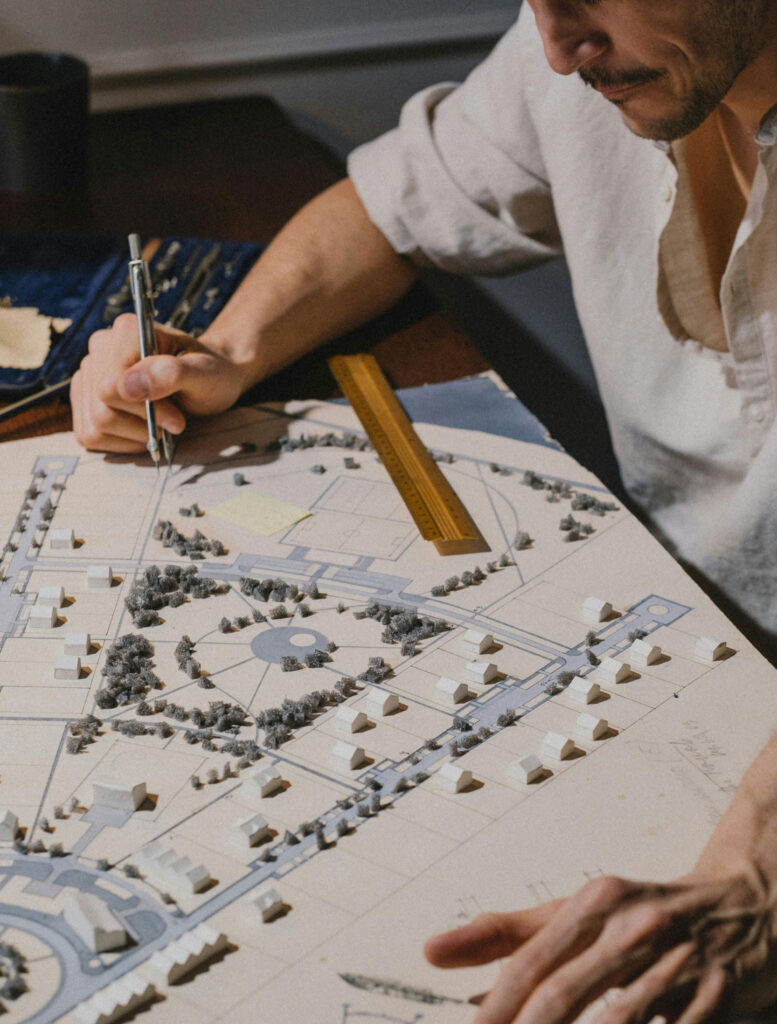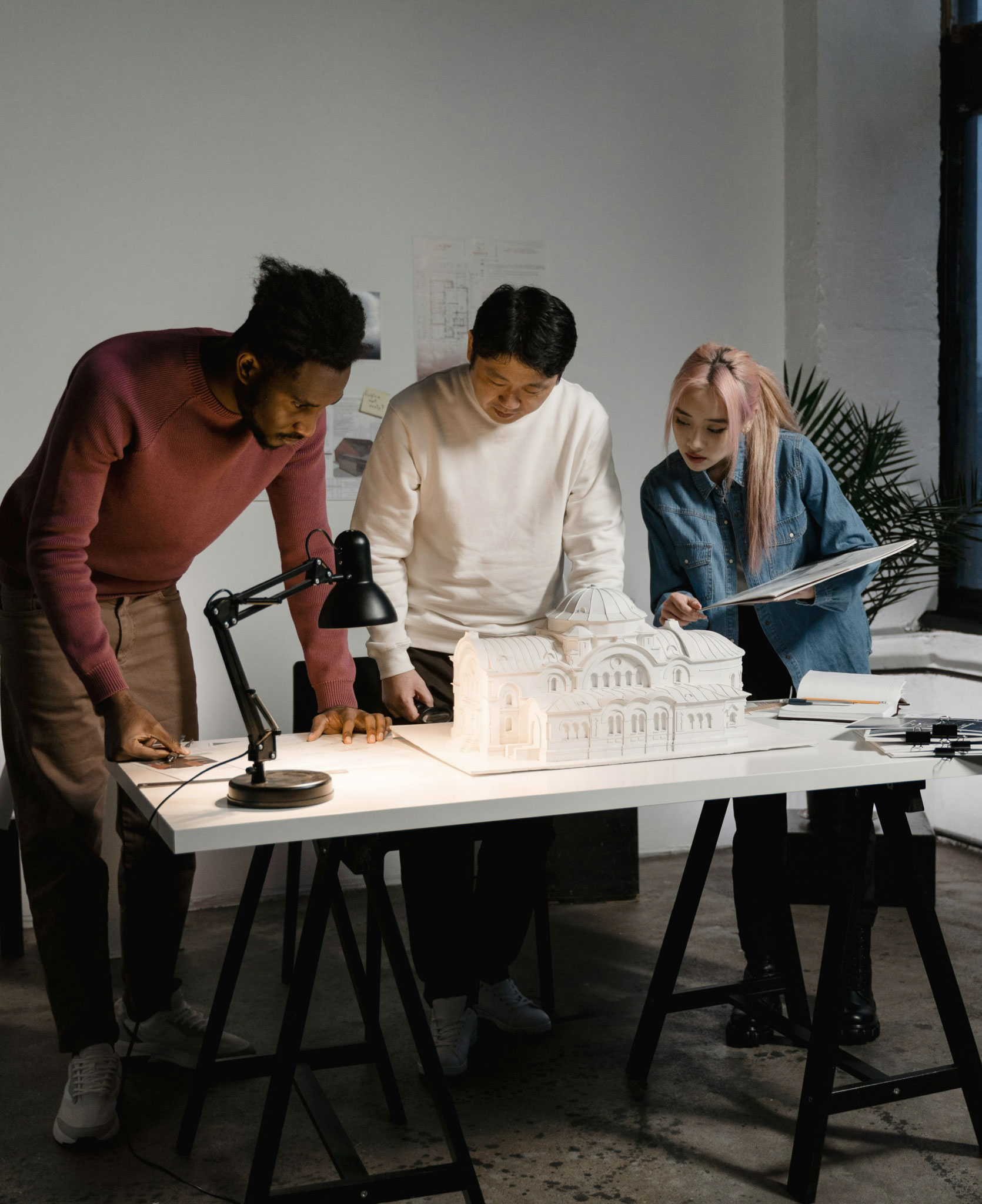Our Process
Our process begins with understanding the client’s vision, lifestyle, and site conditions during the discovery phase. This leads to conceptual design, where initial ideas take form through sketches and early spatial planning. The design is then refined in the development stage, incorporating materials, technical systems, and consultant coordination. Detailed construction documents are prepared for permits and contractor pricing, followed by managing approvals and navigating regulations. During construction, we oversees execution, ensuring the design intent is upheld, and finally supports project close-out, delivering a completed space that reflects both function and beauty.

Clear. Collaborative. Crafted with Purpose.
At our studio, architecture is more than just designing buildings—it’s about creating spaces that inspire, function beautifully, and reflect the people who use them. Here’s how we bring your vision to life
Architecture is more than construction—it’s a shared journey of imagination and creation. With a transparent and collaborative process, we transform your vision into a space that truly feels yours.

Our Process
Our process starts with your vision and continues through move-in, shaped by your goals and the site’s potential
Concept & Discovery
Understanding the client’s vision, site analysis, and gathering requirements to establish the design direction.
Design Development
Translating ideas into form through sketches, 3D models, and plans — refining layout, materials, and aesthetics.
Technical Documentation
Preparing detailed architectural drawings, specifications, and construction documents for approvals and execution.
Construction & Oversight
Collaborating with contractors, ensuring design integrity during construction, and guiding the project to completion
A collaborative journey from first sketch to final space
We listen
We imagine
We refine
We detail
We handle it
Why us
Why our process matters
“As an architect, we don’t just design buildings — we shape experiences, emotions, and the legacy of place.”

